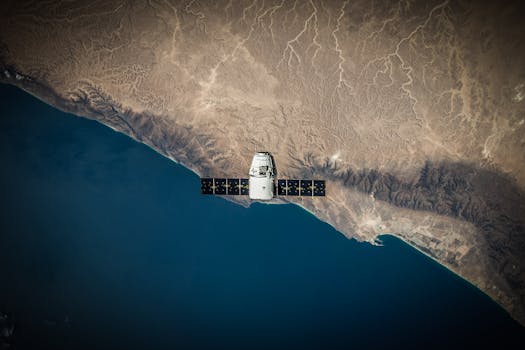
MEO Satellites: Revolutionizing Global Connectivity with Medium Earth Orbit Technology
MEO satellites, or Medium Earth Orbit satellites, are a type of satellite that operates in an orbit between 2,000 and 36,000 kilometers above the Earth’s surface. This orbit is higher than Low Earth Orbit (LEO) satellites but lower than Geostationary Orbit (GEO) satellites. MEO satellites are designed to provide a balance between the benefits of LEO and GEO satellites, offering a wide range of applications and services.
At the beginning of our discussion on MEO satellites, it is essential to understand the significance of this technology in the context of global connectivity. The Focus Keyword, MEO satellites, is crucial in this article as it highlights the importance of Medium Earth Orbit technology in revolutionizing the way we communicate and access data globally. MEO satellites are playing a vital role in bridging the gap between different regions and communities, enabling seamless communication and data exchange.
Benefits of MEO Satellites
MEO satellites offer several benefits over other types of satellites. One of the primary advantages is their ability to provide global coverage with fewer satellites. Since MEO satellites are in a higher orbit than LEO satellites, they can cover a larger area with a single satellite. This reduces the number of satellites needed to provide global coverage, making it a more cost-effective solution.
Another benefit of MEO satellites is their ability to provide high-speed data services. MEO satellites can offer data speeds of up to 100 Gbps, making them ideal for applications that require high-bandwidth connectivity, such as video streaming and online gaming. Additionally, MEO satellites have a lower latency compared to GEO satellites, which is essential for real-time applications like video conferencing and online gaming.
Applications of MEO Satellites
MEO satellites have a wide range of applications, including telecommunications, navigation, and Earth observation. In the telecommunications sector, MEO satellites are used to provide mobile broadband services, including voice, data, and video services. They are also used to provide backhaul services, connecting remote areas to the global telecommunications network.
In the navigation sector, MEO satellites are used to provide location-based services, such as GPS and GNSS. These satellites are also used to provide emergency response services, such as search and rescue operations. In the Earth observation sector, MEO satellites are used to monitor the environment, track weather patterns, and detect natural disasters.
Challenges and Future Developments
Despite the benefits and applications of MEO satellites, there are several challenges that need to be addressed. One of the primary challenges is the high cost of launching and operating MEO satellites. The cost of launching a single MEO satellite can be hundreds of millions of dollars, making it a significant investment for companies and governments.
Another challenge is the risk of interference from other satellites and terrestrial systems. MEO satellites operate in a crowded environment, and the risk of interference can be high. To address this challenge, satellite operators and manufacturers are developing new technologies, such as advanced antenna systems and interference mitigation techniques.
In conclusion, MEO satellites are transforming the way we communicate and access data globally. With their ability to provide global coverage, high-speed data services, and low latency, MEO satellites are an essential part of the global telecommunications network. As the demand for satellite services continues to grow, MEO satellites will play an increasingly important role in providing connectivity to remote and underserved communities.



